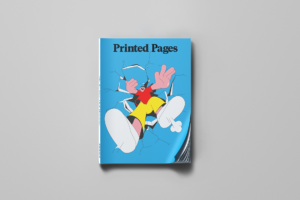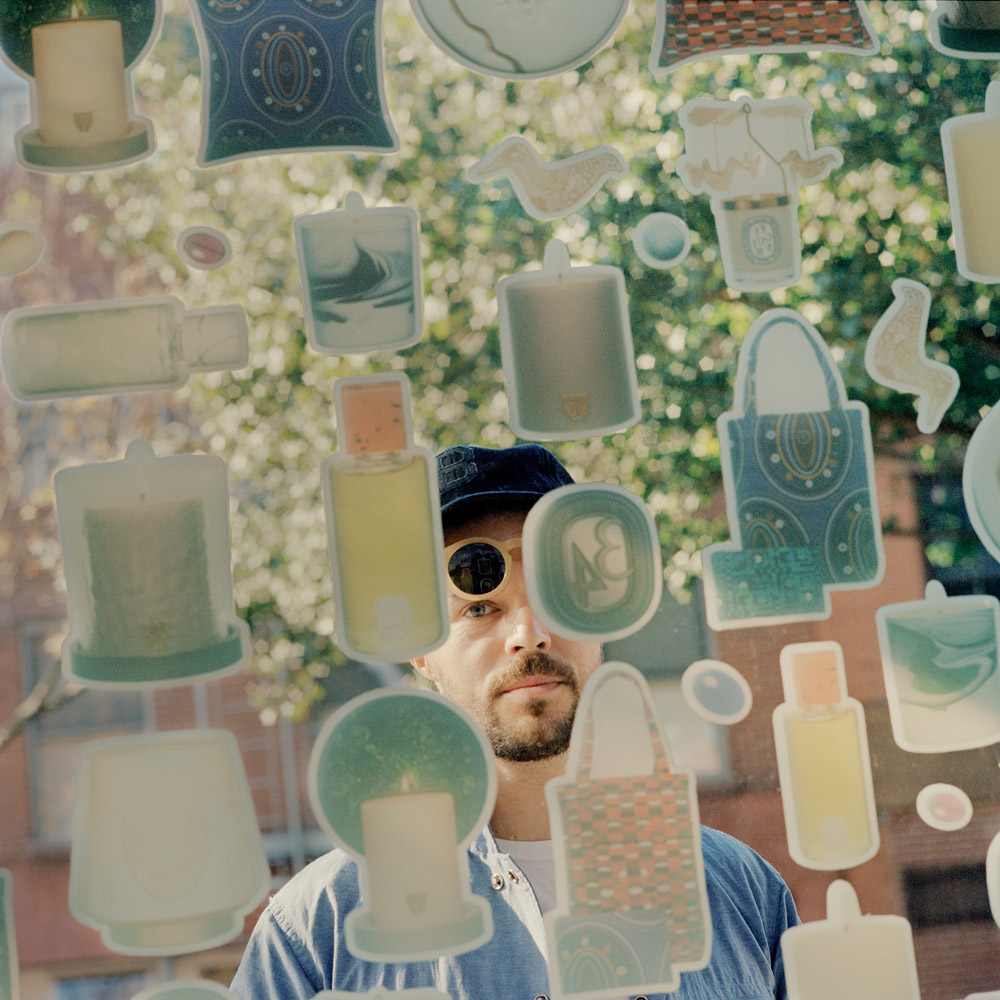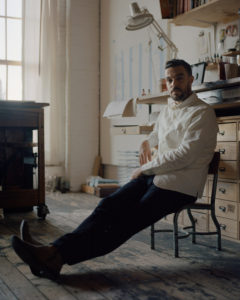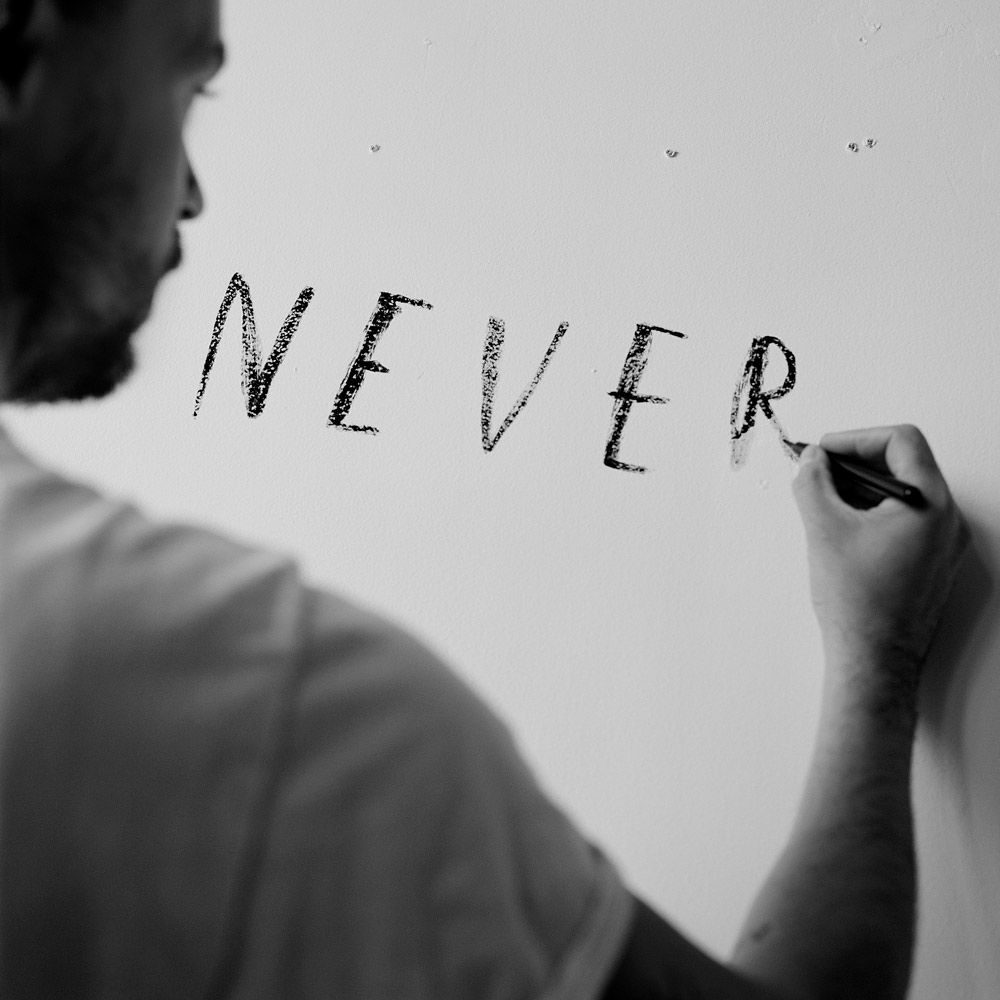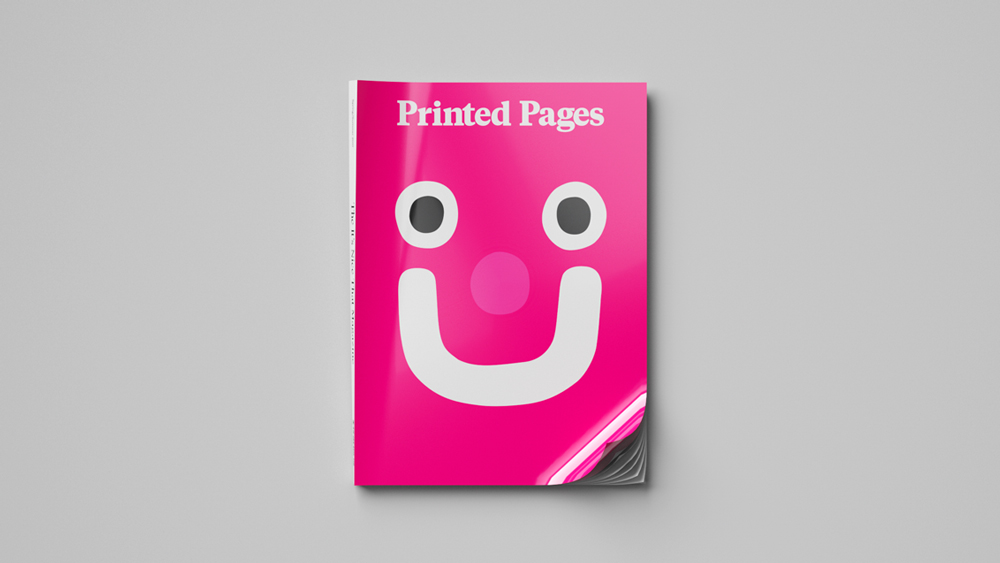Taken from the latest issue of Printed Pages, It’s Nice That catches up with graphic artist Noma Bar to discuss artistic responsibility and his idiosyncratic office
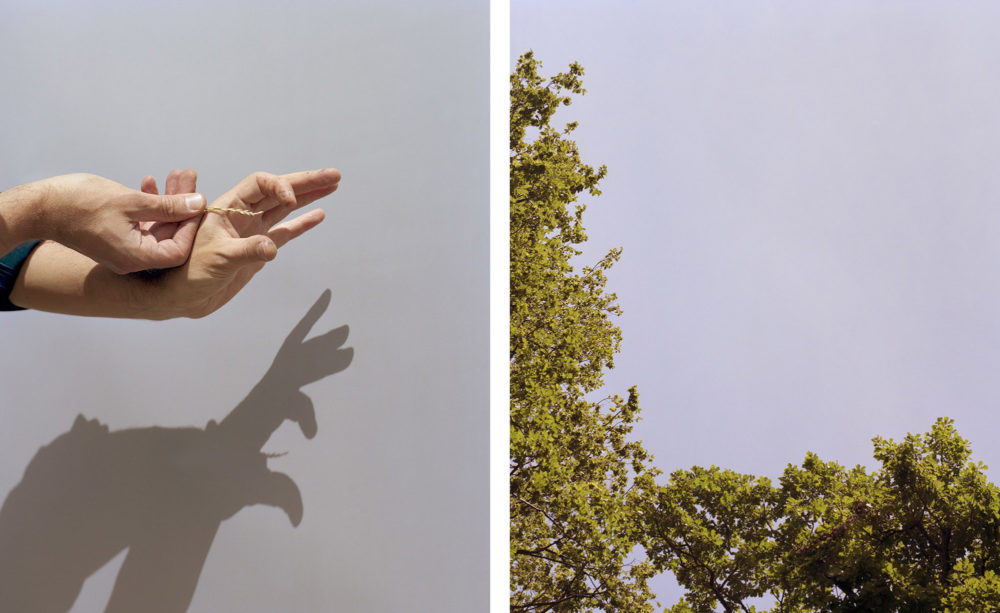
If you go down to Highgate Woods in London today, you might be in for a bit of a surprise. Among the dog walkers, the frazzled parents searching for their kids and the forestry workers making sure that the ancient woodland is being preserved, you might, if you look carefully, find one of the most prolific artists and illustrators working in the UK. Highgate Woods, all 28 hectares of it, is Noma Bar’s ‘office’. Everyday, come rain or shine, the graphic artist is there, somewhere, armed with his notebooks and pens, working through ideas that will appear in their final forms in newspapers, magazines, as part of a campaign or a gallery.
“You won’t find me drawing the flowers or the trees,” says Noma with a chuckle. “I’m not here to react to the seasonal changes or the landscape. I need the energy and the contrast to what is happening in the city.” We are sat by his current ‘desk’ that is hidden away from a footpath. It is here that he works, pen in hand, only leaving for meetings in the city or to go home and turn his ideas into the thought-provoking, inventive and sometimes controversial work he is famed for. It’s Nice That has joined for an afternoon to see the sights and learn more about Noma, his background and art. Our interview occurs soon after he has released Bittersweet, a “mid-career retrospective” with Thames and Hudson – a mammoth five volume box set that splits his portfolio thematically between: Life Death, Pretty Ugly, Less More, In Out and Rough Smooth.
Noma’s work has been exhibited and published extensively responding to subjects ranging from war crimes to online porn. Over the course of his career his images that playfully tackle these far ranging topics have become known for the juxtaposition within the imagery and his mastery of negative space and block colour. “When you see my work, you wouldn’t think it was created in the woods,” says Noma thoughtfully. “I like this contrast.”
His work is adept at condensing complex subjects into simple images that belie the depth of thought and endeavour that goes into making them. His work for the Guardian, New York Times and other bastions of the old media establishment has seen him deal with the topics that informed the names of each section of his new book with apparent ease. “There isn’t one way to do it. There’s something in me that wants to strip things down. No one knows the pain and sweat that goes into making each work,” he explains. “It’s like being a musician or a dancer. You might see the sweat on the stage, but you don’t see everything that has gone into it. I’m not crazy about showing that process, I want to keep things for myself. Theres a lot of deleting and starting again.”
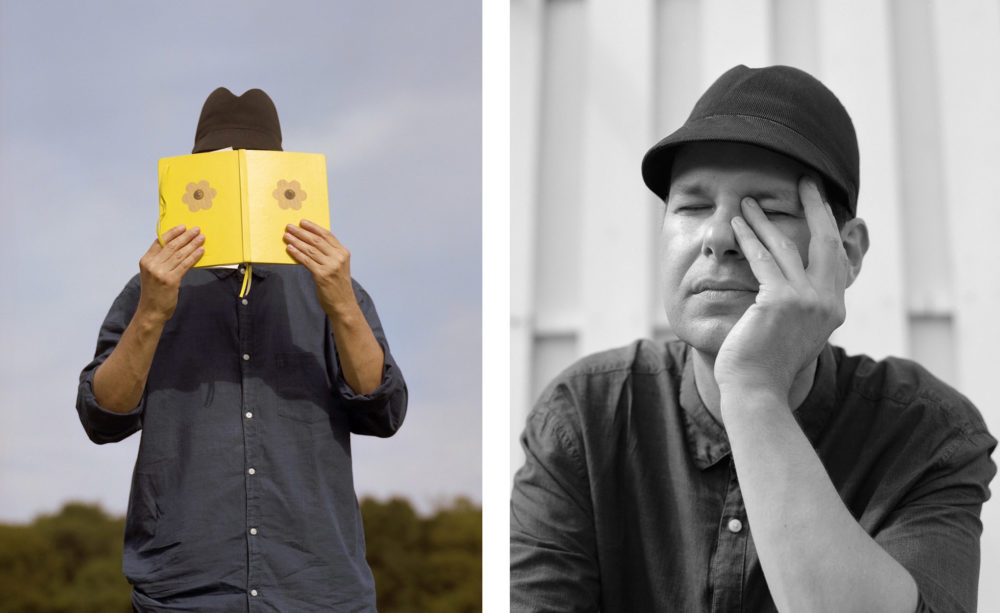
Whatever the brief, be it a commercial client, a publication or a commission for a charity or campaign, Noma’s belief in his responsibilities is resolute. “As designers we have power. If I can use my pen to say things, to affect and change realities, I will,” he says firmly. “It’s like a singer writing a song. If I work for someone like Cancer Research and can attract someone to donate to the cause through a poster, that is my contribution. It’s another voice. It can be a powerful thing.”
It’s not only the more overtly emotive works that embody this thinking. Noma has been called to produce portraits of countless faces over the years. It’s something that endlessly fascinates him and his sketchbooks are full of faces he has seen on his travels in the woods, around the capital and further afield. “Taking iconic faces and working into them is fun,” he says. “It’s deconstructing them to the extreme. The power lies in taking on something that is already iconic. I am taking the icon and breaking the icon. An average, normal, beautiful face is more tricky to draw.” Among the film stars, politicians and royalty he has to depict, one face returns more than others. “I get a lot of Hitlers. People don’t like that I draw Hitler. For me, drawing Hitler is provocation whatever the message is. It’s something that I am dealing with and it is a bitter pill. Hitler is fun. Challenging is fun.”

The challenges come thick and fast, and as Noma gathers his thoughts and records them in his sketchbook, sat among the foliage in the woods, he can never truly anticipate the response an image will generate. Controversy has followed his overtly political works – be it a Time Out cover that merged the image of Big Ben’s clocktower with an representation of anal sex, or a piece about George Bush and the Iraq war that saw “countless emails and letters questioning why I did it”. It’s Noma’s storytelling abilities that get him to his final ideas. “I didn’t choose this. It’s just something I can do,” he says. Noma can reduce the graphic nature of a topic without losing how profound the message it is, or place something in the mainstream media that might be too difficult to convey in another way. “I have a name now, people come to me to solve problems. I wouldn’t do what a photographer would do. I can say things about, say, sexuality and bring fun to sex. Or I have done really serious briefs covering topics like rape, war or paedophiles. There is no harm in what I am doing visually. I enjoy doing this work.”
This is an excerpt from an article published by It’s Nice That in August 2017, and features in the latest issue of Printed Pages
